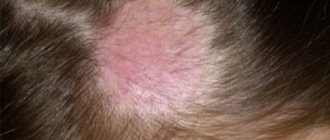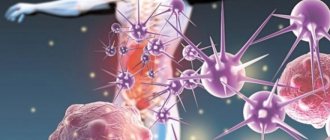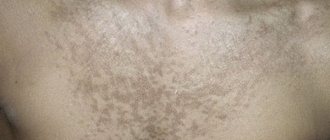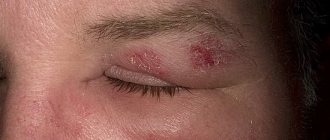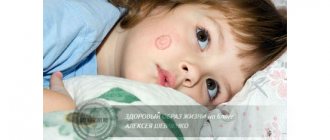Lichen sclerosus of the vulva
Diagnosis and treatment of vulvar diseases
forms a significant part of women's primary health care. Pathology of the vulva of a non-inflammatory nature is found in women of any age, but its significance is especially great in the perimenopausal and postmenopausal periods of women, since at this time the possibility of neoplasia increases. The main symptoms of diseases of the external genitalia are itching, pain, nonspecific irritation and/or the presence of a tumor.
The number of methods for diagnosing non-inflammatory diseases of the vulva
is small and includes examination and biopsy in addition to a thorough history. Due to the fact that vulvar lesions are often difficult to diagnose, one of the main conditions is the widespread use of biopsy.
In the relevant sections
Our site deals with a variety of pathological changes in the vulva, including non-neoplastic dermatoses, whitish mucosal lesions (atrophies and hyperkeratoses), benign tumor-like lesions of the vulva, intraepithelial neoplasia and cancer of the external genitalia.
Simple chronic lichen of the female genital organs
In contrast to many dermatological lesions
, which can be described as “a rash that itches,” lichen simplex chronicus (LSC) can be described as “a rash that appears after scratching.” Although this definition is simplified, it describes this condition well. It is believed that most patients develop this disease secondary to irritant dermatitis, which progresses to lichen simplex chronicus as a result of chronic mechanical irritation from scratching and friction.
Mechanical irritation promotes epidermal hyperplasia
, which, in turn, leads to increased sensitivity, causing even greater mechanical irritation.
In the anamnesis of such patients
There is always progressive itching and/or burning of the vulva, which may be temporarily relieved by rubbing with a washcloth or the like. The etiology of the initial onset of itching is often unknown but may include sources of skin irritation such as laundry detergents, fabric softeners, perfumed hygiene products, and other dyes or fragrances. Potential sources of irritation must be identified. To break the vicious circle described above, it is necessary, along with treatment, to eliminate the effect of all household or hygienic irritants.
On clinical examination
Diffusely reddened areas with isolated hyperplastic and/or hyperpigmented plaques of red or reddish-brown color are often found on the skin of the labia majora and minora and the perineum. In this case, it is also possible to detect individual areas of linear hyperplasia, which are manifestations of severe hyperkeratosis of the epidermis. In cases of such characteristic changes, biopsies are usually not required.
Empirical treatment
includes the use of antipruritic medications such as Benadryl (diphenhydramine hydrochloride) or Atarax (hydroxyzine hydrochloride), which suppress involuntary scratching at night while sleeping. At the same time, steroid ointments are used, applied to the external genitalia, which usually brings relief. Ointments with hydrocortisone (1 or 2%) or, in the presence of significant areas of obvious hyperkeratosis, with triamcinolone acetonide (0.1%; Kenalog) or betamethasone valerate (0.1%; Valison) can be used. If significant relief is not achieved after 3 months of treatment, a diagnostic vulvar biopsy should be performed.
Although usually lichen planus is a desquamative lesion of the vagina
, sometimes its foci can be located in the vulva area, on the inner surfaces of the labia minora and in the vestibule area. Patients may develop areas of whitish, lace-like bands of keratosis near the reddish ulcerative lesions, which is characteristic of this disease. Typical complaints include chronic burning and/or itching of the vulva and insertion dyspareunia, as well as heavy vaginal discharge. Plaque formation and atypical hyperplastic changes may develop, so a biopsy may be necessary to confirm the diagnosis in some patients.
For lichen planus, biopsy
demonstrates the absence of cellular atypia in areas of hyperplasia. Examination of vaginal discharge often reveals large numbers of acute inflammatory cells (white blood cells) in the absence of significant numbers of bacteria. Most often, the diagnosis is made on the basis of typical complaints of burning in the vulva/vagina and/or insertion dyspareunia, which are combined with characteristic examination findings and examination of fresh smears, which reveal a large number of leukocytes.
Treatment of lichen planus
produced by topical steroid preparations similar to those described above. In patients with severe hyperkeratosis, a stronger steroid such as fluocinonide 0.05% (Lidex ointment) or triamcinolone acetonide (0.5%; Aristocort) may be used. The duration of treatment is often shorter than for lichen planus, although lichen planus may recur more frequently.
Pityriasis rosea in the groin
Pityriasis rosea in the groin is considered an infectious-allergic disease.
Its causative agent is considered to be herpes type 7. With this disease, round spots with clear boundaries appear on the body. Ringworm usually appears on the back, chest, limbs, and groin area. The disease occurs between the ages of 20 and 40 and affects men more often than women. This is due to increased sweating in the groin in males.
Causes
It is difficult to determine where lichen of Zhiber in the groin comes from. Although the disease is considered infectious, it is not transmitted to other people and the sick person is not contagious.
However, there are predisposing factors to the development of this pathology:
- recent acute respiratory viral infection;
- diabetes;
- frequent stress;
- diseases of the gastrointestinal tract;
- excess weight;
- impaired metabolism.
As can be seen from the list, the disease affects people with weak immune systems. Therefore, it is important to support the immune system:
- lead a healthy lifestyle;
- avoid hypothermia.
Signs
Typically, pityriasis rosea in the groin appears during the recovery period after a cold. The first spot, the “maternal plaque,” is the largest, up to 10 cm in diameter, its edges are bright red. The appearance of this spot is accompanied by a deterioration in the general condition of the patient.
Advice from a dermatologist... Itching, rashes and flaking of the skin signals that the body is SCREAMS at the top of its lungs about problems. What these symptoms mean, we asked the chief physician Sergei Vladimirovich Rykov... Read more...
Appears:
- weakness;
- headache;
- loss of appetite.
After a few days, a yellow coating appears in the center of the plaque, which dries over time and takes on the appearance of scales.
After 7-10 days from the onset of the disease, many small spots with a diameter of no more than 1 cm appear on the body. In the photo you can see that they have a regular oval shape and are not prone to merging.
Plaque and scales also form in small spots. The skin underneath becomes dry, cracks, and the patient feels discomfort and severe itching. The disease never affects the face, scalp or mucous membranes.
Recovery occurs 4 to 6 weeks after the first spot appears without special treatment. If the patient's immunity is greatly reduced, the disease can last up to 6 months with periods of exacerbation and remission.
After the lichen disappears, a pigment spot remains in its place, which will disappear over time. Long-term illness and improper hygiene can lead to a secondary bacterial infection and a deterioration in the patient’s general condition.
Diagnostics
Often when red spots appear, a person wonders what it could be? Lichen or fungus, but Zhiber's lichen can also be confused with other extremely dangerous diseases:
- measles;
- rubella;
- psoriasis;
- pityriasis versicolor;
- secondary syphilis;
The first 2 diseases (measles and rubella) are childhood infections, but their occurrence in an adult is also possible. Psoriasis, pityriasis versicolor and secondary syphilis are extremely serious diseases that, without timely and proper treatment, can lead to serious consequences.
Therefore, if you find pink spots on your body, it is better to contact a dermatologist to conduct a comprehensive examination and prescribe the right treatment.
Treatment
Treatment of pityriasis rosea can be divided into 2 types: general and local. General treatment involves the use of tablet forms of drugs.
These include:
- acyclovir is an antiherpetic drug, the main method of treating the disease;
- erythromycin is a broad-spectrum antibiotic;
- prednisolone is a hormonal drug;
- suprastin – antihistamine;
- enterosgel – sorbent;
- linex - bifidobacteria to restore normal intestinal microflora;
- immunomodulators and immunostimulants - to increase your own immunity;
- vitamin complexes.
Local treatment
For local treatment, a variety of skin treatment products are used.
- Tsindol is a zinc-based suspension. Reduces inflammation, dries the skin;
- Lassara paste – has an antibacterial and drying effect;
- Sinaflan - hormonal ointment;
- Akriderm GK is an ointment based on salicylic acid. Has an antimicrobial, anti-inflammatory effect.
In men, treatment may take a longer period of time due to increased sweating in the groin area.
Recommendations for patients with lichen Zhiber
If, after visiting a doctor, the diagnosis is confirmed, then for a speedy recovery the patient should follow some rules.
- Wear cotton, loose underwear. Tight synthetic panties will only aggravate the course of the disease and provoke a bacterial infection.
- Change underwear daily.
- Wash once a day. After a shower, gently dry the stains without rubbing them.
- If possible, provide access to fresh air to the affected areas.
- Stop playing sports until complete recovery.
- Eat right: remove allergenic foods from your diet, as well as fatty, smoked and pickled foods. Confectionery products are also prohibited.
For lichen rosea it is prohibited:
- bathe often;
- sweat;
- visit the pool and sauna;
- use soap and a washcloth;
- Do massage;
- use hormonal ointments for more than 2 weeks;
- scratch spots;
- wear synthetic clothing;
- sunbathe.
Prevention
Since the disease affects people with weak immunity, every person should be able to increase it.
To strengthen the immune system you need:
- Healthy food;
- exercise;
- harden.
After suffering from colds, it is recommended to use immunomodulators to help the immune system.
Conclusion
Zhiber's pink lichen in the groin area appears in people with reduced immunity. Some doctors believe that it does not need to be treated and will go away on its own.
Doctors warn! Shocking statistics - it has been established that more than 74% of skin diseases are a sign of parasite infection (Accarida, Giardia, Toxocara).
Worms cause enormous harm to the body, and the first to suffer is our immune system, which should protect the body from various diseases.
The head of the Institute of Parasitology shared the secret of how to quickly get rid of them and cleanse your skin, it turns out that it’s enough... Read more...
Others recommend a whole range of medications. In addition, pityriasis rosea can be confused with other serious diseases. Therefore, to make the correct diagnosis and prescribe the correct treatment, you need to consult a dermatologist.
Source: https://venbolezni.com/smezhnye-problemy/rozovyiy-lishay-v-pahu.html
Lichen sclerosus or kraurosis of the vulva
Kraurosis or lichen sclerosus of the vulva is a pathological process associated with atrophic changes in the tissues of the external genital organs in women. The disease is characterized by dry mucous membranes, itching, the appearance of sclerotic and atrophic tissue changes, and the development of vulvitis.
Kraurosis of the vulva is more often diagnosed in women who have entered menopause, but sometimes the disease is found in young women and even girls. With lichen sclerosus, hyperkeratosis and excessive growth of connective tissue are observed, which leads to deformations of the vulvar tissue.
Forecast
The prognosis is good for more acute genital cases of the disorder, especially in the pediatric age group in which it may resolve spontaneously. The prognosis is worse in extragenital cases and chronic atrophic diseases of the genital organs.
Many childhood cases improve with the onset of puberty. In contrast, some authors suggest that the rate of spontaneous resolution may be lower than 25%.
Lichen sclerosus is not associated with increased mortality unless the patient develops a malignancy in the affected area. Cancer arising from extragenital manifestations is described only in rare cases and may be accompanied by other factors.
Extragenital cases and many cases on the genitals are asymptomatic, except for the cosmetic aspect or itching. Recurrent cases, especially those associated with erosion or progressive scarring, can lead to severe sexual dysfunction.
There may be an increased risk of developing squamous cell carcinoma in patients with genital disease, but the precise increase in risk and which cofactors (human papillomavirus infection or previous radiation therapy) may be involved are not yet fully understood. In patients treated for vulvar cancer, the presence or absence of lichen sclerosus does not appear to influence the timing of recurrence.
Reasons for development
To date, it has not been possible to find out the exact reasons leading to the development of lichen sclerosus. The following theories seem most likely:
- Infectious. Kraurosis can develop against the background of a long-term infectious disease caused by HPV or herpes.
- Autoimmune. According to this theory, kraurosis develops as a consequence of non-standard reactions of the immune system to the body's own tissues.
- Since kraurosis in most cases develops during menopause, a hormonal factor cannot be ruled out.
- Some studies confirm a psychomatic factor in the development of lichen sclerosus. The disease is more often observed in patients suffering from depression and having problems in their personal and sexual lives.
- Sometimes the trigger for the development of lichen sclerosus is trauma, including a chemical burn of the tissues of the vulva.
Causes and risk factors
The exact cause of lichen sclerosus is unknown. Most studies claim that it is an autoimmune disease. Autoimmune disorders occur when the body's natural defenses against "foreign" or invading organisms (such as antibodies) begin to attack healthy tissue for unknown reasons. In some cases, lichen sclerosus may be associated with the formation of certain antibodies (for example, a protein of the thyroid gland (thyroglobulin) or certain cells that line the walls of organs).
Some scientists believe that there is a genetic predisposition to the disorder. Genetic predisposition means that a person may carry a gene for a disease, but it may not be expressed unless something in the environment triggers the disease. Other researchers believe that hormonal, irritant and/or infectious factors (or a combination of these) cause this skin disorder. Cases have been reported in which lichen sclerosus appears on the skin after injury and trauma.
Recent research suggests that the most likely cause of the disorder is an autoimmune reaction in genetically predisposed individuals.
Stages of disease development
Kraurosis of the vulva is a long-term chronic disease. There are three stages in its course:
- The first stage of lichen sclerosus is characterized by the formation of tissue edema. This condition is caused by tissue hypoxia due to impaired microcirculation.
- At the second stage, kraurosis is manifested by changes in pigmentation. Whitish scales appear on the mucous membrane, dryness and roughness of the skin are noted. The labia take on a flatter shape.
- The third, most severe stage of development of lichen sclerosus is characterized by the formation of areas of atrophy on the tissues of the vulva and the development of cicatricial sclerotic changes. Sclerotic areas of the mucosa shrink, which leads to tissue deformations. There is a decrease in the volume of the labia, narrowing of the urethra, anus, and vagina. This leads to difficulties during sexual intercourse. Kraurosis can lead to pain during bowel movements and urination.
Cracks may appear in the altered tissues of the vulva with lichen sclerosus. These lesions are usually deep and heal very poorly. In addition, kraurosis due to the formation of cracks can be complicated by the addition of infections.
Lichen planus: symptoms, treatment, doctor's advice
Lichen planus is a chronic skin disease in humans. The reason is unknown. The main symptom: a papular (nodular) itchy rash appears on the skin and mucous membranes. Treatment is carried out by a dermatologist. Women get sick 2 times more often than men. Age of patients: 30-60 years. In children it is extremely rare. The duration of the disease is from 1 month to 1 year.
ICD 10 code: L43. Abbreviated medical name: KPL. Latin name: LICHEN RUBER PLANUS. According to the classification, it belongs to papullosquamous skin diseases.
In the photo: lichen planus
Theories of the development of lichen planus
- Hereditary causes. Hereditary predisposition to the disease is higher in families where one or both parents suffer from lichen planus. Statistically, the incidence rate in such families is higher.
- Neurogenic theory. Often the disease occurs after nervous stress and mental shock in a person.
- Infectious hypothesis. In some patients, manifestations of lichen ruber occurred after viral or bacterial infections. For example, after viral hepatitis, after a herpes infection, after the flu.
- Toxic-allergic causes.
Lichen planus sometimes occurs with prolonged contact with chemicals and materials for filling carious cavities in dentistry. Rarely, manifestations of the disease appear after taking medications, for example, after a massive course of antibiotic therapy. - Diseases of the gastrointestinal tract, endocrine system: gastritis, enterocolitis, pancreatitis, diabetes, etc.
Is lichen planus contagious?
No, it's not contagious. Histological studies did not find any infectious agents. That is, it is not transmitted from person to person.
Symptoms and clinic
- Papules.
The main symptom of lichen planus is the appearance on the human skin of reddish-bluish or purple papules (nodules) measuring 2-4 mm. The shape of the papules is polygonal, non-round. There is a slight depression in the center, so the papule looks flat. Over time, the papules become covered with small scales, but the peeling is not pronounced, not the same as with psoriasis. The scales are difficult to separate from the base. - Skin itching. This is a sign of an exacerbation of the disease. In the remission stage, there is no itching or papules, but areas of increased pigmentation (hyperpigmentation) may remain.
- Waxy sheen symptom: in transmitted light, papules and plaques have a waxy sheen.
- Wickham's network symptom: when smeared with vegetable oil, a mesh pattern (gray dots and stripes) is clearly visible on the surface of large papules.
- Koebner's symptom: the appearance of new rashes as the skin is scratched is a sign of severe skin itching.
Pictured: Wickham grid
The main locations of the papular rash in lichen ruber
- folds of skin on the flexor surfaces of the joints of the arms and legs,
- on the body, especially in the sacral area,
- genital organs - labia, glans penis,
- on the arms and legs – the front surface of the shins and forearms,
- in 20% of cases – oral mucosa (whitish rashes on the tongue, lips, mouth),
- rarely – nails (thinning, clouding, grooves and depressions on the nail plate),
- rarely papules are located along the passage of nerve endings,
- very rarely – scalp.
In the photo: red lichen on the leg
In the photo: lichen on the back and arms
In the photo: lichen on the penis
In the photo: lichen on the labia
In the photo: ringworm on the tongue
In the photo: lichen in the oral cavity
Clinical forms of lichen planus
- The typical form is in 75% of patients. Papules appear on the skin, they can merge into groups.
- Hypertrophic, or warty atypical form.
Papules merge into large formations, grow like hyperkeratosis or warts, and outwardly resemble senile keratosis. They are most often located on the front surface of the legs. - Ring-shaped atypical shape. Papules merge into a ring.
- Bullous or blistering atypical form. In addition to papules, blisters with clear or bloody contents appear. Requires early initiation of treatment.
- Erosive-ulcerative atypical form. Localized in the oral cavity. Along with papules, erosions and ulcers appear on the mucous membrane.
- Atrophic atypical form. There are few papules; bluish-pink spots appear in their place over time. Skin itching is minor.
In the photo: ring-shaped lichen
Differential diagnosis is carried out with
- psoriasis,
- genital warts,
- parapsoriasis,
- bullous pemphigoid,
- eczema,
- neurodermatitis,
- seborrheic dermatitis,
- atopic dermatitis,
- lupus erythematosus,
- oral leukoplakia,
- nodular prurigo,
- lichenoid and warty skin tuberculosis,
- papular syphilide.
Complications
The hypertrophic and erosive-ulcerative form of lichen planus becomes malignant in 3% of cases, that is, it degenerates into squamous cell carcinoma.
Treatment
How to treat lichen planus if the cause is unknown? According to modern recommendations, effective treatment of the disease should always include several areas.
In 99% of cases, hospitalization is not required. Treatment is carried out under the supervision of a dermatologist at home and in the KVD clinic.
Treatment or elimination of the underlying disease or precipitating factor
This could be the treatment of viral hepatitis, diabetes, eliminating the effects of a toxic substance, combating stress, etc.
Local therapy
- Corticosteroid creams and ointments are prescribed. These drugs reduce the immune response in the skin and reduce the activity of inflammation. Ointments: Fluorocort, Akriderm (read about Akriderm ointment in detail), Triderm, Sinaflan, Belosalik and others. Lubricate the affected area of the skin 2 times a day - 4 weeks.
Repeated course - only after agreement with a dermatologist.Treatment with corticosteroids is effective. According to reviews, signs of exacerbation of the disease disappear within a week. But there is a danger of side effects and the “ricochet” effect, when a relapse of the disease occurs after discontinuation of glucocorticoids.
- Preparations based on naphthalan. Ointment and cream Losterin, Naftaderm. Apply to the affected area of skin 2-3 times a day – 4 weeks. If necessary, the course is repeated after a week's break.
General therapy
- Antihistamines - prescribed to relieve itching and reduce inflammation. Claritin, loratadine, suprastin, Erius, Telfast, tavegil, diphenhydramine.
- Retinoids: Tigazon and Neotigazon, isotretinoin.
The effect of the drugs is to inhibit the excessive growth of skin cells and normalize keratinization processes. The membrane structures of cells are stabilized. Take neotigazon 20-30 mg once a day with meals. The course of treatment is 1.5-2 months. - Immunosuppressants are drugs that suppress the immune system.
They are prescribed only by a doctor and are prescribed by prescription. Used for severe forms of lichen planus that cannot be treated with other means: - Corticosteroid hormones in droppers and tablets: prednisolone, dexamethasone and others. – Cytostatics: Chloroquine, Hydroxychloroquine, Cyclosporine A.The effect of using immunosuppressants is quick and lasting, but there are also many side effects.
- Antibiotics are prescribed in the presence of infectious and purulent complications on the skin in patients with lichen ruber.
- Sedative therapy (valerian, motherwort), hypnosis, electrosleep. Reducing the excitability of the nervous system has a beneficial effect on the healing process - it always goes faster and more efficiently.
- Diet. Exclusion of allergenic foods (chips, soda, citrus fruits, honey, etc.), spicy foods, hot foods, alcohol. It is especially important to follow a diet if the oral mucosa is affected.
Physiotherapy
- Used in the complex treatment of lichen planus.
- PUVA therapy. Drugs that have a photosensitizing effect on the skin are used - psoralens (for example, Methoxalen). The drug is given to the patient either in tablets or as an ointment.
Psoralens accumulate in skin cells. After 3 hours, the affected areas of the skin are exposed to ultraviolet irradiation. Excessive proliferation of epidermal cells is suppressed and skin infiltration is reduced.In those areas of the skin that are not exposed to UV rays, psoralens have no effect. The positive effect of the procedure begins on the 4th day. A course of treatment requires 20-30 PUVA therapy procedures.
According to reviews from patients and doctors, the effectiveness of the procedure is up to 80% in the complex treatment of the disease.
PUVA therapy does not have the addictive effect of corticosteroid ointments and creams.
- Hydrogen sulfide and radon baths, mud.
- Magnetotherapy. Ineffective procedure. Can only be prescribed in combination with other areas of treatment.
Photo booth for PUVA therapy
Let's look at the video of how PUVA therapy is performed:
doctor Evgeniy Ivanov October 09, 2019
Source: https://www.DermatologVenerolog.ru/papulosquamous/58-krasnyj-ploskij-lishaj-foto-simptomy-i-priznaki-lechenie
Clinical picture
The initial symptom of the development of lichen sclerosus with damage to the tissues of the vulva is a feeling of tingling, dryness, burning, and tightening. At this stage, symptoms may be mild, so patients do not pay attention to them for a long time.
The main symptom of the development of kraurosis is severe itching, which is paroxysmal in nature. Itching is especially intense at night, as well as after physical exertion and after taking a hot bath. Intense itching of the vulva can no longer go unnoticed by the patient; this condition can cause sleep disturbances, decreased performance, and the development of psycho-emotional disorders.
In the later stages of development, kraurosis is manifested by the appearance of pain during sexual intercourse. Sometimes defecation disorders and dysuria develop. A patient with lichen sclerosus has abrasions, scratches, cracks, and inflammation on the tissues of the vulva.
At the initial stage of development, kraurosis is manifested by swelling of the tissues of the vulva. As the disease progresses, the tissues become dry and rough. In the later stages, the mucous membrane becomes white-gray and wrinkles.
Gradually, the labia majora become like flat ridges, and the clitoris and labia minora are almost not defined. The lumen of the vagina and urethra sharply narrows.
Ringworm on penis
In men, signs of lichen occur in addition to the lower abdomen, on the scrotum and head of the penis, as well as on the inner thigh and folds of the buttocks, which indicates the need to contact the dermatology department for adequate treatment (for clarity, you can see the photo on the medical website). Patients experience severe itching and cannot get rid of it with a shower. The skin affected by the disease becomes severely inflamed, blisters and peeling appear.
When the genital organs are affected, patients complain of pain when urinating, as well as the appearance of round spots on the dermis, outlined by narrow inflamed areas. To avoid complications of a fungal infection, it is forbidden to scratch the groin area.
The initial stage is characterized by isolated pink areas affected by the fungus. In severe cases, the spots darken, pustules appear, and then the rashes merge into one large spot.
At the beginning of the disease, men notice a slight itching in the groin area and genitals, which intensifies over time. Then itching sensations appear in the anus and rashes appear on the affected areas. If you do not start treating the disease in time, pathogenic microorganisms invade the healthy surface of the epidermis.
Diagnostic methods
In the process of diagnosing lichen sclerosus, instrumental, physical and laboratory research methods are used.
As a rule, the initial diagnosis can be made during the initial gynecological examination. A research method such as colcoscopy is also very informative.
In the first stages of development, kraurosis has symptoms similar to those of vaginitis, vulvitis, neurodermatitis, and leukoplakia. Therefore, differential diagnosis with these diseases is required. In the later stages, kraurosis of the vulvar tissue is determined unmistakably.
If lichen sclerosus is detected, the patient is recommended to be sent for a PCR test to exclude infection with HPV and herpes. In addition, it is necessary to rule out diabetes mellitus and take an immunogram.
Treatment
Kraurosis of vulvar tissue is a difficult-to-treat disease that requires an individual and comprehensive approach to treatment. The course of kraurosis in different patients can vary significantly, so there is no general treatment regimen for this disease.
The main emphasis in the treatment of lichen sclerosus is on relieving inflammation, reducing the intensity of itching, improving tissue nutrition and eliminating psycho-emotional stress.
For the treatment of kraurosis, patients are prescribed:
- Taking antihistamines and sedatives. For persistent itching of the vulva, an alcohol-vocaine blockade of the pudendal nerve may be indicated.
- For local treatment of lichen sclerosus, the use of hormonal ointments containing estrogens, corticosteroids, and progesterone is prescribed. The choice of drugs depends on the age of the patient. Young women with kraurosis are prescribed ointments with progesterone; they are recommended to be used in the second half of the monthly cycle. Elderly patients need products containing estrogens and gestagens. For severe itching, drugs with androgens are prescribed.
- In the treatment of kraurosis, physiotherapy is used - irradiation with Bucca rays, reflexology, laser treatment, reflexology. Vitamin therapy, medications to support the immune system, and biological stimulants are required.
- If conservative treatment of kraurosis does not produce an effect, cryodestruction of the affected tissue or laser ablation may be prescribed. If malignancy is suspected, excision of the superficial tissues of the vulva is indicated.
Prognosis and prevention
The prognosis for kraurosis of the vulva is unfavorable. It is impossible to achieve a complete cure of the disease. However, early initiation of treatment may delay the development of the process. The risk of malignancy of kraurosis increases when this disease is combined with leukoplakia, the formation of erosions and cracks.
Prevention of the development of lichen sclerosus lies in early diagnosis, since the earlier treatment is started, the more effective it will be. Therefore, women are recommended to undergo regular preventive examinations.
Classification of species and methods of their treatment
The features of therapeutic actions when lichen appears in the genital area differ according to the nature of the lesions and the type of pathological process.
Lichen planus
The disease can affect both men and women. When pathology occurs in the vagina and vulva, the following symptoms appear:
- changes in skin color - redness or light pale shades are observed, as well as the formation of white stripes;
- burning in the affected areas, pain;
- with deep damage to the skin, red spots form;
- sticky liquid mixed with blood may be released;
- the entrance area of the vagina narrows.
Men are mainly affected by this type of deprivation of the penis. The disease is accompanied by the following symptoms:
- the head of the genital organ is covered with ring-shaped spots of white and purple shades;
- the rash is not itchy;
- the resulting papules have a characteristic shine and a flat base.
When treating lichen planus, it is important to follow a fortified diet.
Treatment of lichen planus of the genital organs is based on following a dietary diet that excludes the intake of junk food, eliminating the general symptoms of the disease and eliminating the causes that cause the development of the pathology. For this, the doctor prescribes the following drugs:
- to relieve itching and inflammation, corticosteroid ointments - Fluocinonide, Clobetasol and Elokom;
- antihistamines - Erius, Tavegil, Claretin;
- immunosuppressants based on chloroquine for the spread of lesions - “Delagil” or “Plaquenil”;
- antibiotics in the presence of complications in the form of ointments and tablets - “Tetracycline”;
- sedatives to reduce nervous excitability - motherwort, valerian;
- retinoids that normalize the keratinization process - “Neotigazon” or “Tigazon”.
To strengthen the immune system, a fortified diet is required. All drugs for the treatment of genital lichen planus are prescribed exclusively by a doctor.
Pityriasis versicolor
This skin disease is caused by a fungus. Pityriasis versicolor or pityriasis rosea on the genitals does not occur often. The infection is caused by the fungus Pityrosporum orbiculare. The main symptoms of this type of genital damage are:
- the formation of round spots with uneven edges;
- peeling of the affected areas.
The spots may be red, brown or pink. Over time, they increase in size and spread over the skin of the genitals. In this case, the rashes become discolored. Sometimes itchy sensations occur.
Pityriasis versicolor is not dangerous if treated in a timely manner.
Fluconazole is a broad-spectrum antifungal drug
To eliminate the pathology, local therapy is used:
- ointments and creams - Miconazole, Ketoconazole or Econazole;
- for severe lesions, antifungal drugs in the form of tablets - Fluconazole, Itraconazole.
If there is itching in the genital area with lichen versicolor, treatment is supplemented with antihistamines - Zyrtec, Claretin, Erius. It is also recommended to wipe the areas of skin affected by lichen with resorcinol or salicylic alcohol.
Pityriasis rosea
This disease is infectious and allergic in nature. It can occur on the human genitals, as well as on the back, abdomen and chest. Infection with pityriasis rosea has the following symptoms:
- small pink rash;
- the appearance of yellow color in the central part of the spots;
- the formation of a large number of skin scales.
There is no itching or pain in the affected areas. Sometimes the symptoms go away on their own after two months.
Treatment for pityriasis rosea consists of a diet enriched with vitamins and the exclusion of allergenic foods from the daily diet. At the same time, patients should not irritate the skin during water procedures with washcloths or detergents with fragrances. Also use the towel carefully after washing. For severe lesions, the doctor may prescribe antihistamines and antibiotics.
Scleroatrophic
Pathology occurs mainly in the genital area. It can affect the genitals of both men and women. Genital lichen sclerosus has the following general symptoms:
- the presence of plaques with pronounced white borders;
- formation of blisters with hemorrhagic filling and erosions;
- dysfunction of the urinary system;
- itching;
- formation of scars at the site of lesions.
When treating the disease, glucocorticoid ointments are used - “Cloveit”, “Dermovate”. The treatment is quite long-term. For complications, calcineurin inhibitors and retinoids are prescribed. To eliminate itching - sedatives.
The danger of complications of this type of genital lichen is that in the absence of therapeutic action, the disease can take on an oncological character. Squamous cell carcinoma occurs in 1 percent of cases. The pathology mainly occurs in patients who have not sought help from a doctor for a long time.

